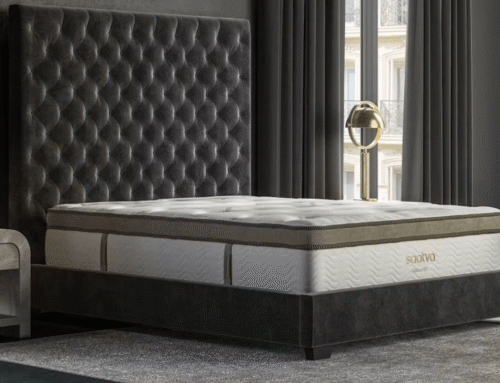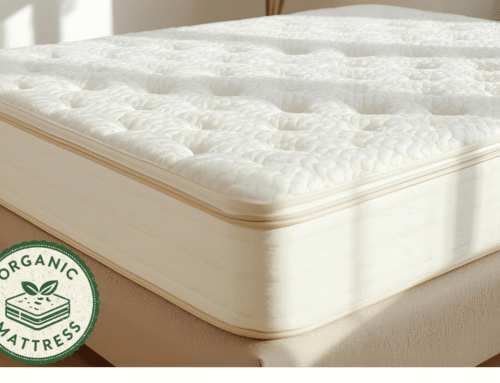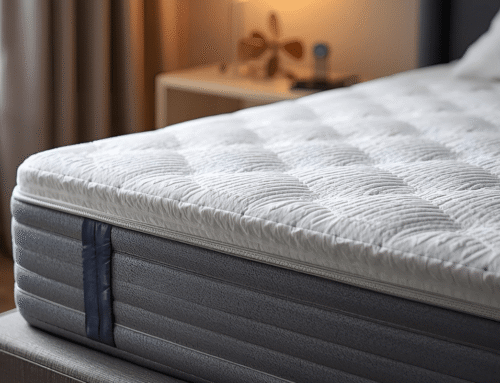Memory foam mattress thickness affects how your body feels overnight. A 6- or 8-inch one may feel too firm or too flat, especially if you sleep on your side or carry more weight. A 12- or 14-inch option often feels plush, but it traps more heat and makes it harder to move around. A 10-inch memory foam mattress provides a good balance of comfort and support for many people. It cushions well without sinking too deep. People who switch between back and side sleep often say it stays supportive while still feeling comfortable.
Your comfort depends on more than thickness—how your body feels in the morning says more. Rather than guess based on numbers, think about what helps you sleep through the night without tossing. Let’s explore which memory foam mattress thickness suits your body and sleep style best.
Understanding the difference between a memory foam mattress and a gel memory foam mattress gives helpful context when deciding which thickness is right for you.
Key Takeaways
- A 10- to 12-inch memory foam mattress feels comfortably soft without letting you sink in too deeply.
- Thinner mattresses under 8 inches might suit kids or guest rooms but usually lack the support adults need for nightly sleep.
- Heavier sleepers (over 230 pounds) should choose a mattress at least 12 inches thick to prevent sagging and ensure strong and lasting support.
- Side sleepers benefit from thicker comfort layers. Look for 3 to 4 inches on top to ease pressure on hips and shoulders.
- Thicker mattresses last longer, offer better stability, and reduce motion transfer, which makes them ideal if you share your bed with a partner.
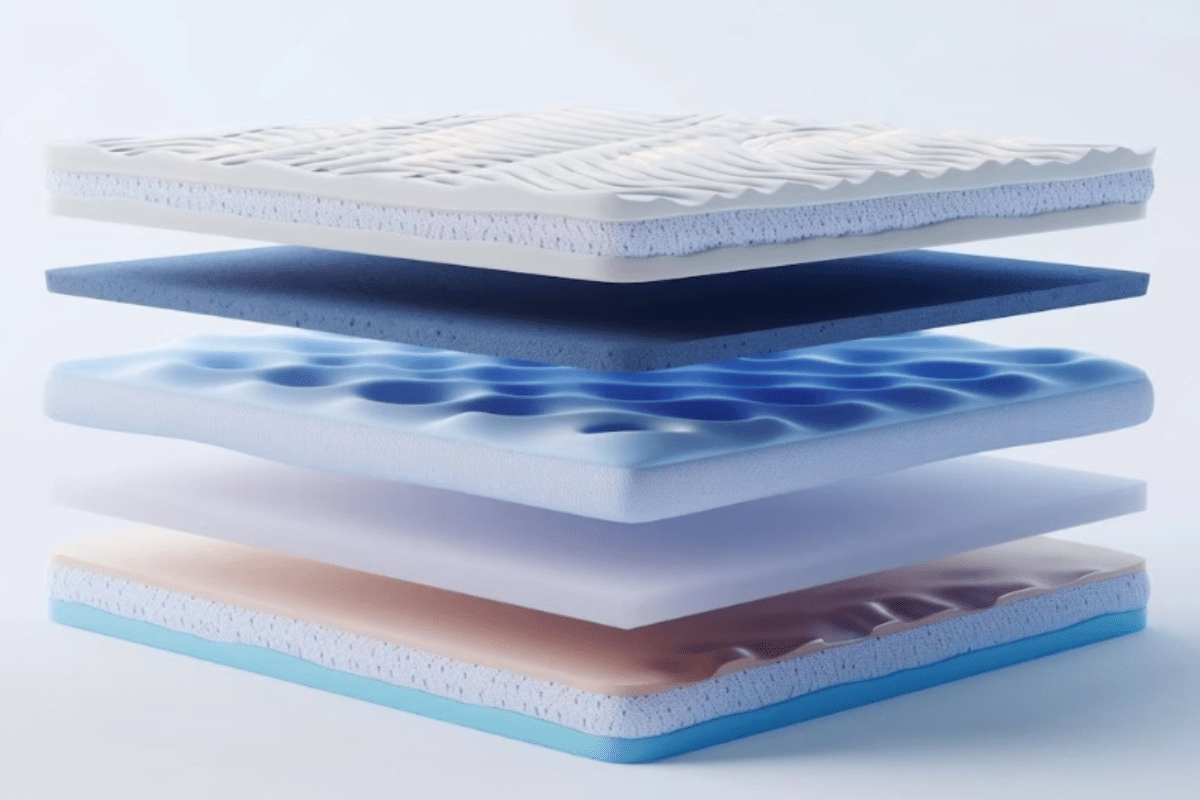
Memory Foam Mattress Thickness Guide
A memory foam mattress isn’t just about how thick it looks. It’s about how those layers feel through the night. A 10 to 12-inch option usually hits the right mix of softness and support for most sleepers. You feel cushioned without sinking too deep, and there’s enough structure underneath to keep your back from aching in the morning.
Anything under 8 inches feels more like a padded mat. That might work in a kid’s room or for an occasional guest, but it won’t hold up for daily use. Thicker beds around 14 inches feel extra soft and cozy, yet they weigh more and take more effort to move.
What matters most is how the top layer handles pressure and how firm the base feels. A softer upper section eases tension in your hips and shoulders, while a strong core keeps everything level. You notice the difference after a full night of sleep.
It’s also important to understand how much a memory foam mattress, how long does it take to expand, and what happens if you sleep on it before 48 hours.
Mattress Thickness and Body Weight
Thinner mattresses around 8 to 10 inches can feel just right if you’re under 130 pounds. You’re not putting too much pressure on the layers, so a simple build still feels supportive. There’s no need for extra height that you won’t really use or feel. Staying within the 10 to 12-inch range works for most people between 130 and 230 pounds. It’s enough to balance cushion and support without feeling like you’re sinking or sliding off. That sweet spot gives pressure relief and keeps your spine aligned through the night.
Over 230 pounds, anything less than 12 inches tends to feel too soft or wear out fast. A thicker option with sturdy base layers and responsive foam holds up better over time. It feels stable, especially when turning or getting in and out of bed.
When thinking about the best thickness for your weight, it also helps to consider long-term durability and upkeep. How long does memory foam mattress last and how often should you rotate a memory foam mattress are key factors in maintaining comfort and support, especially under increased body weight.
Best Memory Foam Mattress Thickness For Side Sleepers
Side sleeping puts a lot of pressure on your shoulders and hips, so a thicker layer of foam feels more supportive. Around 3 to 4 inches of comfort foam usually gives that balance between softness and pressure relief. Anything thinner might feel too firm and leave you waking up with sore spots.
A 10 to 12-inch mattress tends to offer just the right amount of cushioning without feeling too soft or too stiff. It feels like your body settles in without sinking too deep, which helps with keeping your spine in a neutral position. Many side sleepers seem to find this thickness more comfortable night after night.
Some people even go for a 14-inch mattress, especially if they have chronic pain or joint issues. That extra height can feel more pillowy and gentle around pressure points. It’s not necessary for everyone, but if your body needs more relief, the thicker mattress can feel more forgiving.
If your mattress feels too soft or retains too much heat, you can make it firmer and cooler to improve comfort and support.
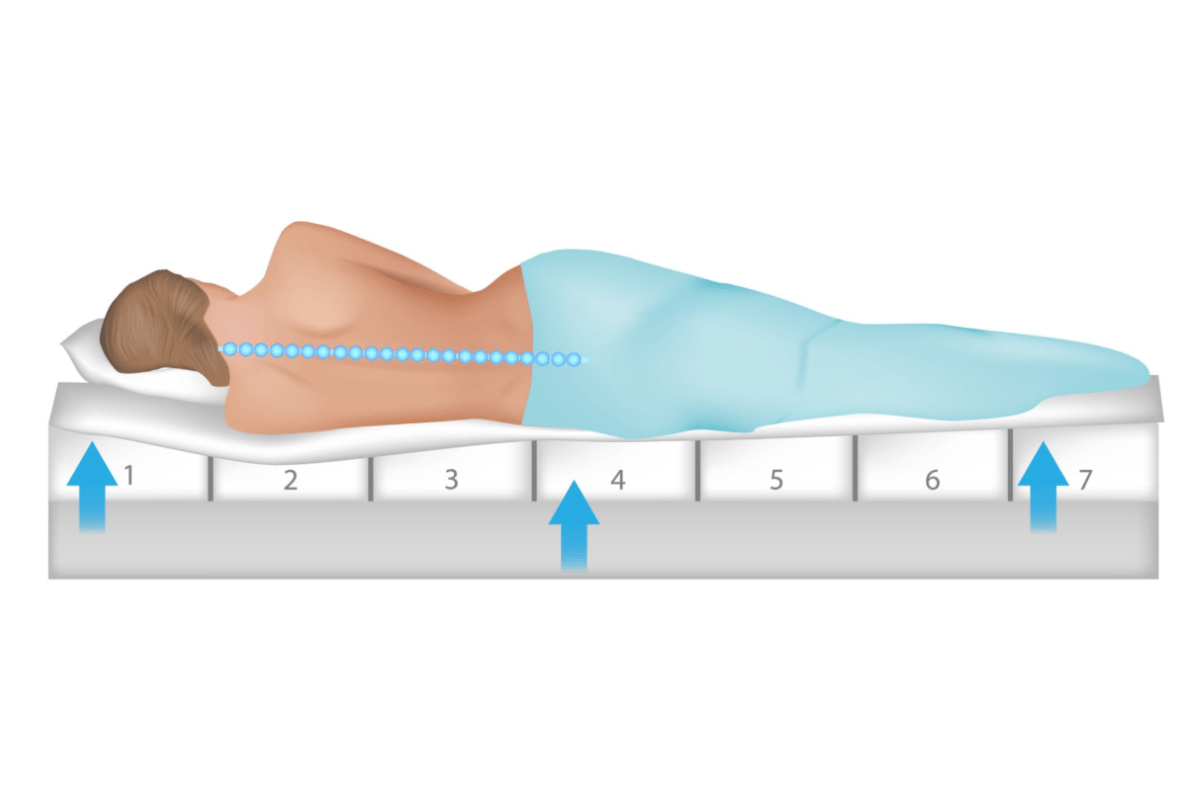
Pros and Cons of Mattress Thickness
A 6 to 8-inch mattress feels easier to move and doesn’t cost much, which helps if you’re on a budget or furnishing a guest room. However, it can feel too thin if you’re sharing the bed or have joint pain. You might start to notice the lack of support pretty quickly, especially over time.
A 10-inch mattress usually gives a nice balance, enough comfort without being too bulky. You might like how it works with most bed frames, and it’s often what you see in well-rated online beds. Still, heavier side sleepers could feel like they’re not sinking in quite enough at the hips and shoulders.
Thicker options around 12 to 14 inches tend to feel more plush, especially if you prefer a soft top with strong support underneath. You’ll probably notice they’re heavier, though, so rotating or setting them up alone is tough. They also cost more, so you’re paying for the extra layers and added cushioning.
One important factor to consider with any mattress thickness is how wear and tear affect its lifespan and comfort. This brings up common concerns such as how often to replace it and how to fix its dips.
Benefits Of Thicker Memory Foam Mattresses
Thicker memory foam mattresses, around 12 to 14 inches, tend to feel more comfortable due to their additional layers. The extra cushioning often creates a soft, almost weightless sensation that many people find relaxing after a long day. This added plushness can help reduce pressure points and improve overall sleep quality.
The support offered by thicker mattresses is usually more consistent because the dense core helps prevent deep sinking or sagging. This means your body stays better aligned throughout the night, which can ease aches and pains. People who weigh more or share the bed with a partner often benefit from this stronger support.
Durability is another advantage since thicker mattresses generally keep their shape longer. The extra material helps resist wear and tear, so the mattress remains comfortable for several years. This can be a smart investment if you want a bed that stays reliable without needing replacement too soon.
However, one downside to thicker mattresses is that they can be more challenging to handle when it comes time to move or store them. It’s important to know how to store them and how to dispose of them properly, as their size and weight require special care to maintain their condition and ensure eco-friendly disposal.
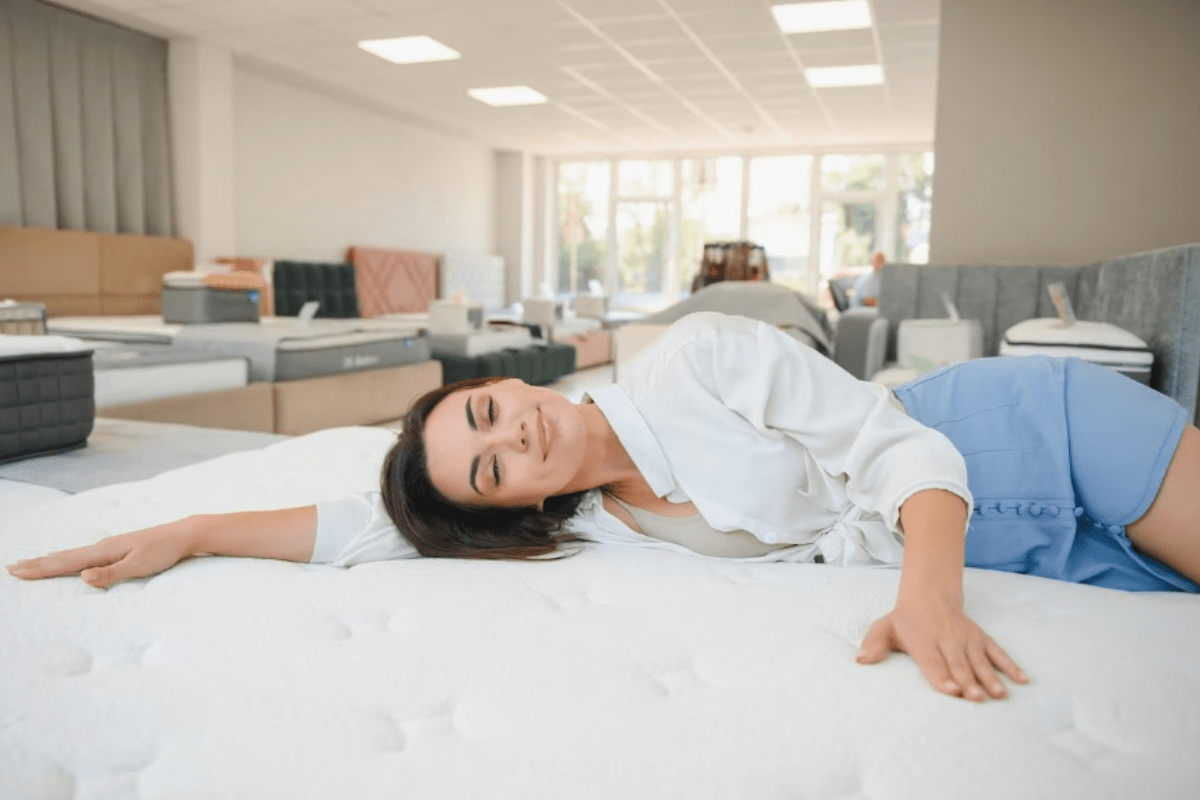
8 Inch Vs 10 Inch Memory Foam Mattress
An 8-inch memory foam mattress can feel fine at first, especially for kids or in a spare room. It’s light, easy to move around, and might seem like a practical choice. But if you’re sleeping on it every night, it starts to feel thin, like there’s just not enough support underneath you.
A 10-inch mattress, on the other hand, offers more comfort without being overly bulky. You’ll likely feel better support under your shoulders and hips, especially if you sleep on your side or toss and turn. The added foam also helps keep your spine more aligned, which is something your body will appreciate over time.
Some people think there’s no real difference, but you’ll probably notice it after a few weeks. A 10-inch mattress tends to hold up better, too, less sagging, fewer dips. It just feels more solid overall, and for daily use, that extra couple of inches really matters.
Because of their difference in thickness and weight, it’s important to understand how to move a memory foam mattress and how to compress it.
Thin Memory Foam Mattress Problems
Thin memory foam mattresses often lack enough cushioning, which causes pressure to build up on your hips and shoulders. This kind of discomfort can leave you tossing and turning at night, waking up feeling sore. Many people don’t realize how much thickness matters until they experience those aches firsthand.
When foam is too thin, it struggles to support your spine properly, which may lead to misalignment and stiffness in the morning. The lack of support means your body doesn’t rest as it should, affecting how refreshed you feel. Over time, this poor alignment can cause more serious aches and pains. Thinner foam tends to break down faster, resulting in dips and lumps that make sleeping uneven and unpleasant. These worn-out spots often feel like the mattress is pressing directly against your bones, which makes it hard to get comfortable.
On top of comfort issues, thin memory foam mattresses are often more challenging to maintain. Their reduced thickness makes them more susceptible to absorbing stains, spills, and odors, which can be difficult to clean thoroughly. Proper care including effective stain removal, urine extraction, and thorough drying is essential to keep a thin mattress hygienic and prolong its usability despite its inherent durability issues.
What If You Sleep With A Partner?
Sleeping with a partner means the mattress has to handle twice the weight and movement, so durability is key. A mattress that’s around 12 to 14 inches thick usually offers better support, especially along the edges, helping both people feel secure without slipping off.
Motion isolation is key because it reduces disturbances when one person shifts or gets up. Without it, you might find yourself waking up every time your partner moves, which can seriously affect how rested you feel.
Good edge support is important too, because it lets each person use the full surface of the bed without feeling like they’ll slide off. Overall, having a mattress that balances support and motion isolation can really improve how you sleep side by side.

Who Should Choose A Thin Mattress?
Thin mattresses, around 6 to 8 inches, suit certain situations well. They’re often fine for kids and teens, who don’t need as much support or cushioning. Lightweight sleepers, especially those under 130 pounds, might also find thinner mattresses comfortable enough without sacrificing rest.
In spaces with limited clearance, like bunk beds or trundle beds, a thinner mattress fits better and keeps the setup safe and practical. These mattresses can also work well in guest rooms or for short-term use where long-term durability and support aren’t as critical. They keep the bed functional without adding bulk or weight.
For everyday adult sleeping, a thicker mattress generally provides better comfort and support. Thicker options tend to last longer and handle heavier weights more effectively, which helps maintain healthy sleep posture. Stretching to at least 10 inches usually means better cushioning and durability for regular use.
Final Thoughts
Consider your weight and how you sleep because those affect the support you need. Lighter sleepers might do fine with thinner mattresses, but heavier sleepers usually benefit from thicker cores that hold up better over time. Sleep position also matters. Side sleepers often need more cushioning, so a thicker comfort layer helps.
Look closely at the comfort layer thickness, aiming for at least 3 inches to feel properly supported and comfortable. The total mattress height alone doesn’t tell the full story, since a taller mattress with a thin comfort layer won’t feel as plush or supportive as a slightly shorter one with more foam on top. It’s better to focus on how much padding sits above the support core.
Avoid mattresses under 10 inches thick for everyday adult use since they may wear out quickly or fail to provide enough support. Thicker mattresses tend to last longer but come with extra weight and cost, so balancing durability with ease of handling is important. Checking detailed specifications helps make a better decision.

